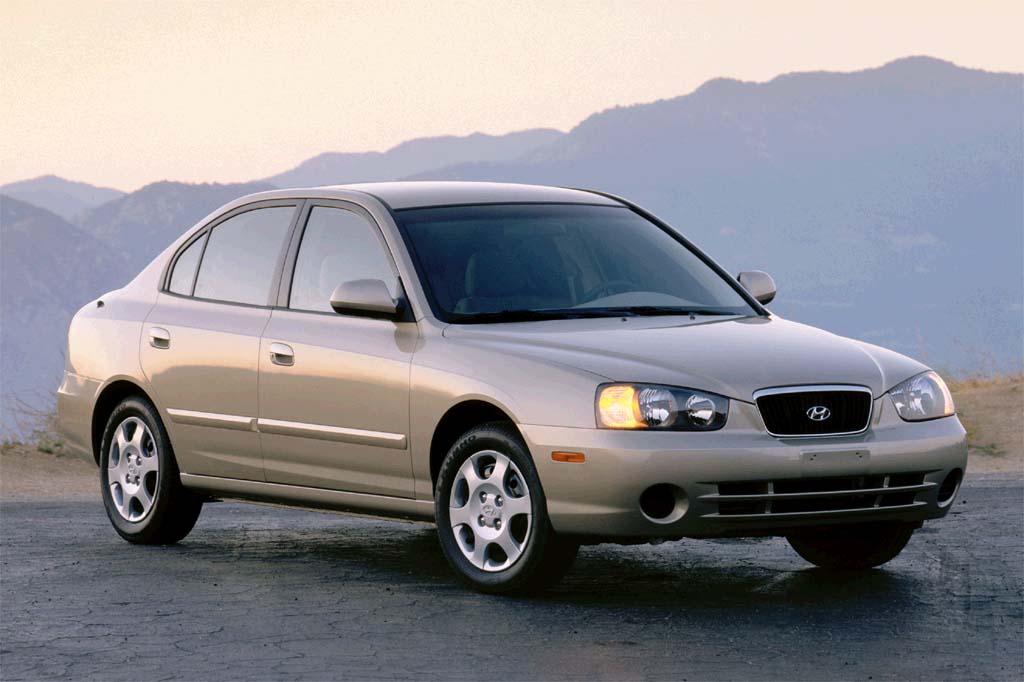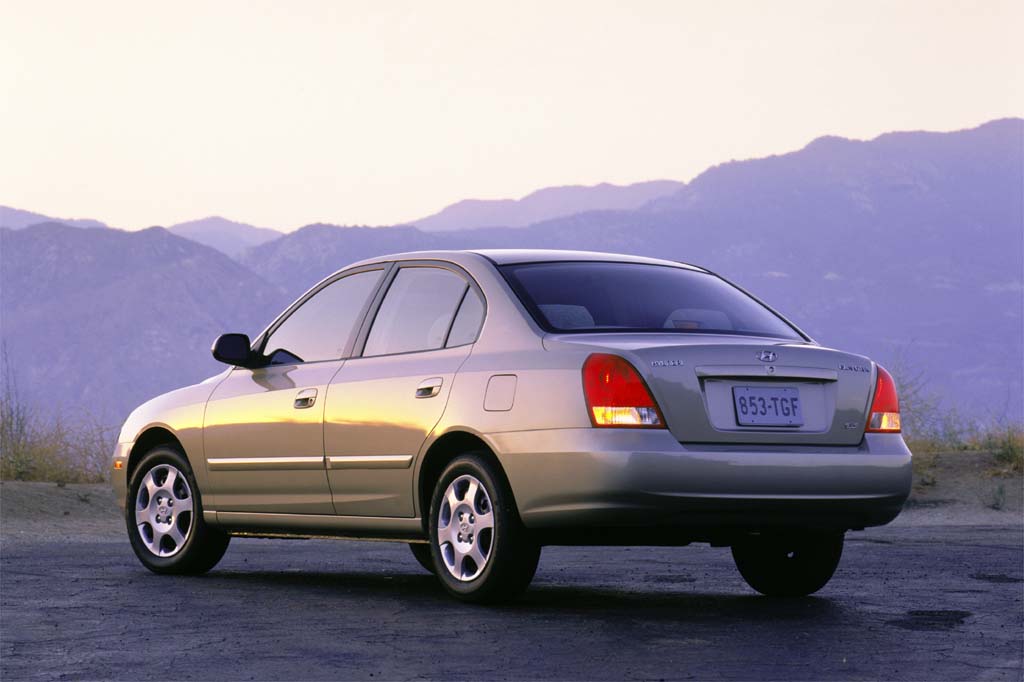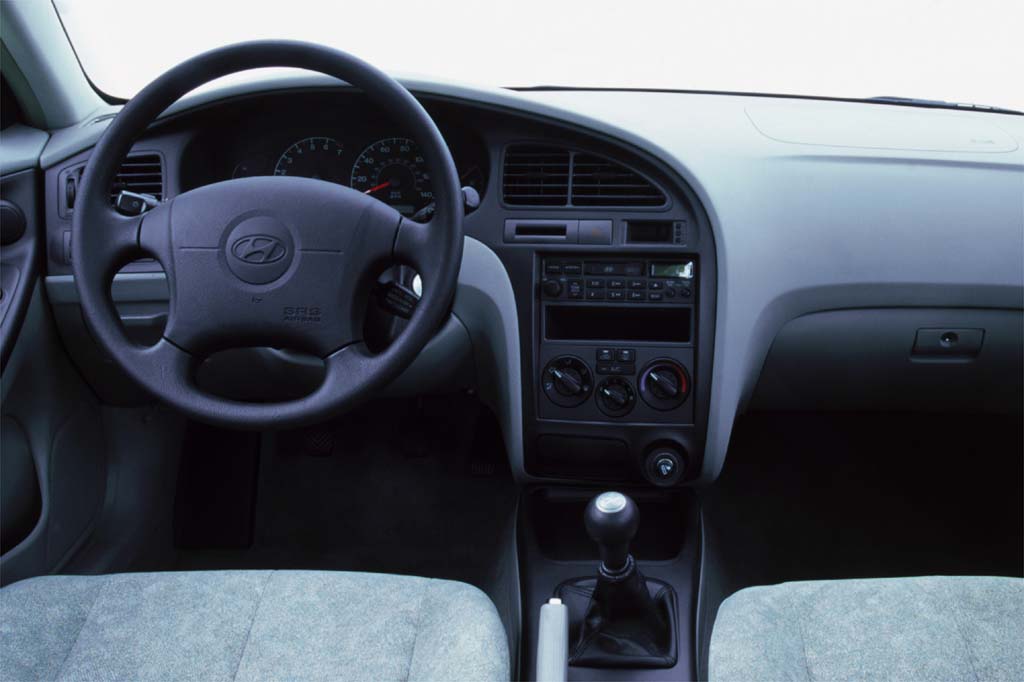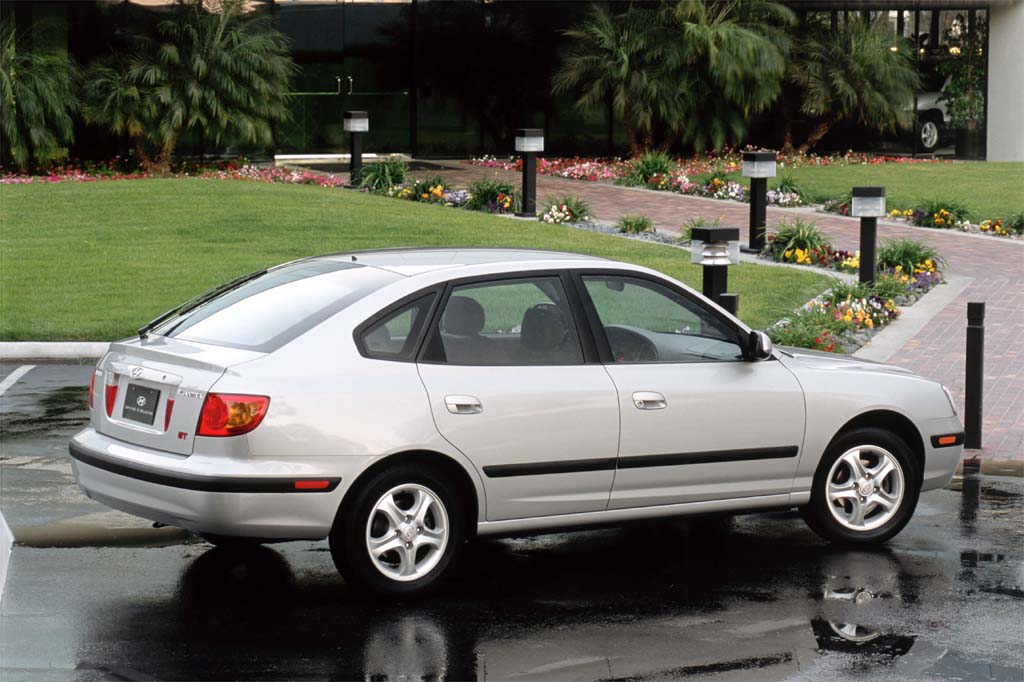| Compact car; Built in South Korea |
|
|
| Good condition price range: $2,100 – $6,600* |

2001 Hyundai Elantra 4-door sedan

2002 Hyundai Elantra 4-door sedan

2002 Hyundai Elantra GLS interior

2002 Hyundai Elantra GT 2-door hatchback

2003 Hyundai Elantra GT 2-door hatchback
| Pros: |
|
| Cons: |
|
In features, comfort, and even road manners, an Elantra is a budget alternative to the class-leading (but costlier) Honda Civic and Ford Focus. Cars from this South Korean automaker haven’t earned a reputation for long-term reliability, but their resale values have been low. That can actually be good news for used-car shoppers.
Overview
Redesigned for 2001, the larger of Hyundai’s two front-drive subcompact cars grew slightly and gained a fresh look, but retained its previous powertrains. Front side airbags became standard.
No more wagons were produced, and the base sedan disappeared, leaving only a GLS sedan. The Elantra’s wheelbase grew by 2.3 inches, overall length by 3.1 inches, and height by 1.2 inches. Curb weight and interior dimensions changed little, though head and leg room shrunk slightly in the rear and increased a bit up front.
A 2.0-liter four-cylinder engine remained the only possibility, though it got new engine mounts. A revised exhaust system promised reductions in noise, vibration, and harshness.
Elantras could have a manual gearbox or a four-speed automatic transmission. Wheel diameters grew an inch, to 15. Shock absorbers were upgraded from hydraulic to gas-filled. Antilocking all-disc brakes were now a standalone option, but the regular non-ABS system stuck with rear drum brakes.
Standard features included air conditioning, power windows/locks/mirrors, a cassette stereo, tachometer, tilt steering wheel, manual six-way driver’s seat, front-seat lumbar adjustment, intermittent wipers, and a split-folding rear seat. Child-seat anchors were installed, and front seatbelt pretensioners had force limiters. Options included cruise control, a 100-watt CD stereo, and a sunroof.
Competitors included the Dodge/Plymouth Neon, Ford Focus, Honda Civic, Mazda Protege, and Nissan Sentra. A GT four-door hatchback joined the sedan during the 2001 model year.
Hyundai’s warranty was one of the industry’s longest: 5 years/60,000 mile basic, 10/100,000 powertrain.
Yearly Updates
| 2002 Elantra Elantras came in two forms for 2002: the GLS four-door sedan and GT four-door hatchback. Both had a 2.0-liter four-cylinder engine and manual or optional automatic transmission. GT models featured a sport suspension, alloy wheels, and leather upholstery. Front side airbags were standard. Antilock braking with traction control was optional; four-wheel disc brakes were standard on the GT and included with ABS on the GLS. |
| 2003 Elantra For 2003, Hyundai expanded its lineup, adding a GT four-door sedan to complement the GT hatchback. All Elantra models continued to use the same powertrain. |
| 2004 Elantra Elantra gets a new grille, taillights, interior console, and interior controls for 2004. |
| 2005 Elantra Hyundai adds a base-model hatchback for 2005. For ’05, GLS and sportier GT trim are offered for both body styles. The new base GLS hatchback gets the GT’s sport suspension. |
| 2006 Elantra Hyundai’s best-selling car gets an uplevel Limited version and adds more available features for 2006. A Limited model sedan joins the GLS version for ’06; the sporty GT sedan is discontinued. Hatchbacks return as GLS or GT versions. |
